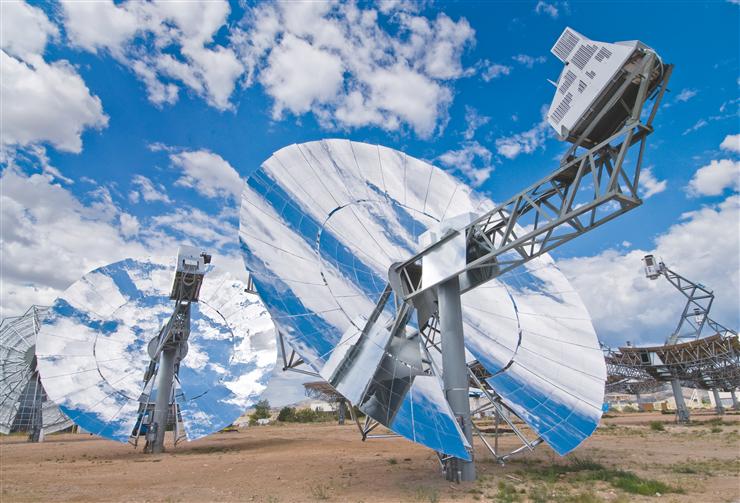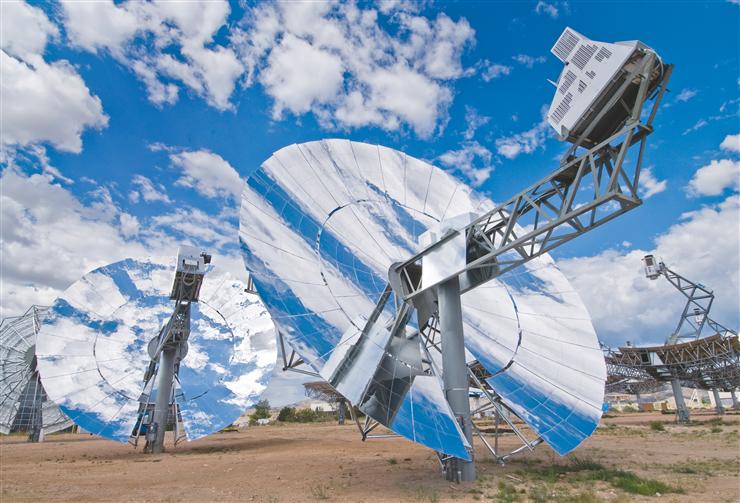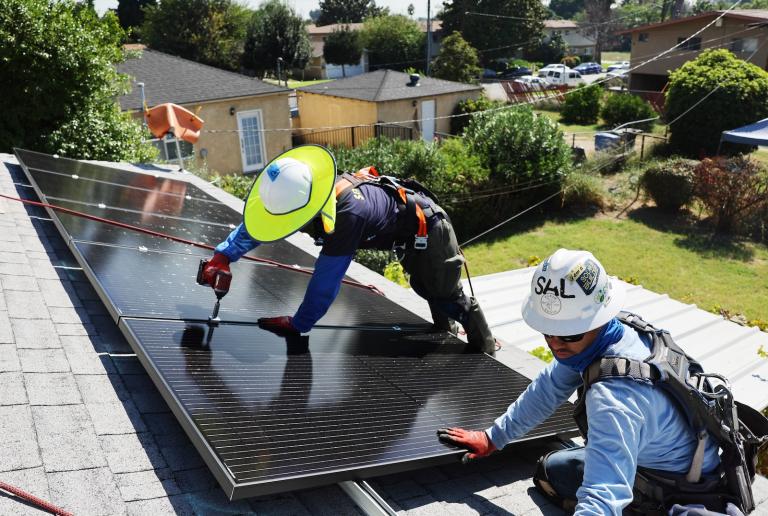 Tessera Solar wants to install 28,360 Suncatchers in the California desert.Photo: Stirling Energy SystemsThe California Energy Commission on Wednesday approved two more big solar thermal power plants, ending the year having green-lighted a total of nine projects that would generate 4,142.5 megawatts if all were built.
Tessera Solar wants to install 28,360 Suncatchers in the California desert.Photo: Stirling Energy SystemsThe California Energy Commission on Wednesday approved two more big solar thermal power plants, ending the year having green-lighted a total of nine projects that would generate 4,142.5 megawatts if all were built.
That’s enough carbon-free electricity to power more than three million homes. The question now is, how many of those massive solar farms will actually break ground?
Hours after the energy commission vote, a federal judge temporarily blocked construction of Tessera Solar’s 709-megawatt Imperial Valley power plant in the Southern California desert in response to a suit by the Quechan Native American tribe.
The Quechan sued the United States Interior Department in October over its approval of the project, arguing that the government failed to adequately consult with the tribe over the impact of installing 28,360, 40-foot-tall solar dishes on its ancestral lands.
The Quechan argued the project would harm the flat-tailed horned lizard, an animal proposed for endangered species protection that is part of the tribe’s creation story.
“Tessera Solar is deeply disappointed with the federal court’s ruling last night,” Robert Lukefahr, Tessera’s chief executive, said in a statement on Thursday. “This ruling sets back our ability to provide clean, renewable power to Southern California and delays our ability to bring jobs and economic development to a region with the highest unemployment rate in America.”
Lukefahr pointed out that El Centro, a city 14 miles from the Imperial Valley project, suffers an unemployment rate of 29.3 percent.
However, a Reuters story last night reported that Tessera had put on hold the Imperial Valley power plant as well as its 663.5-megawatt Calico project in the Mojave Desert due to difficulties in raising financing to build the solar farms.
But on Thursday, Tessera spokesperson Janette Coates told me that the projects had not been abandoned.
“We are actively seeking equity for our Imperial Valley Solar and Calico Solar projects and the actual start of construction will depend on project financing and compliance work which is ongoing,” Coates wrote in an email.
There was some good news on Wednesday for the developers seeking to finance such multibillion-dollar renewable energy projects.
The U.S. Senate passed a one-year extension of a crucial cash grant program that was set to expire at year’s end. The program allows developers to receive a cash payment to cover 30 percent of a renewable energy project’s cost in lieu of receiving an investment tax credit.
The House of Representatives was set to take up the extension of the cash grant program on Thursday.



